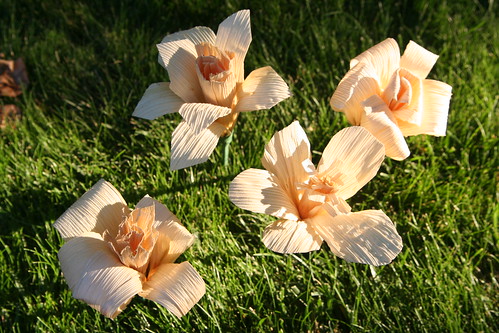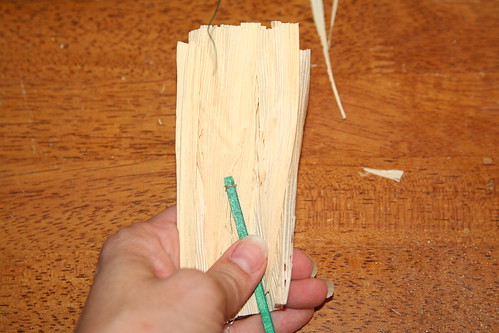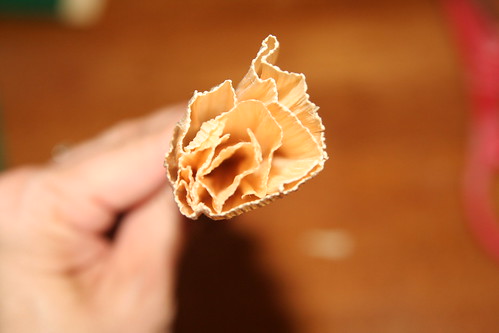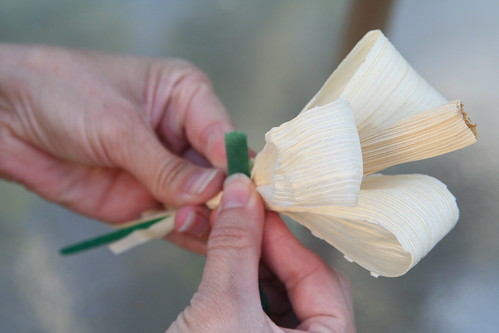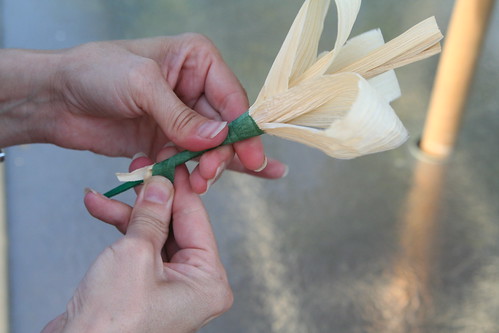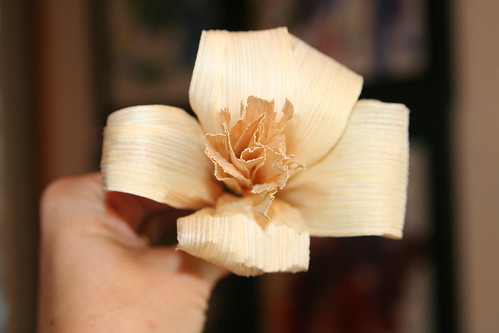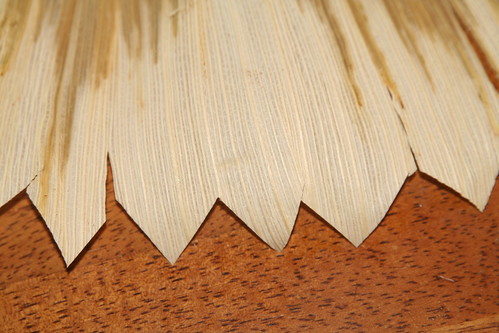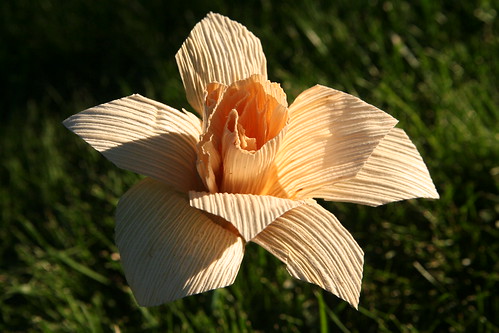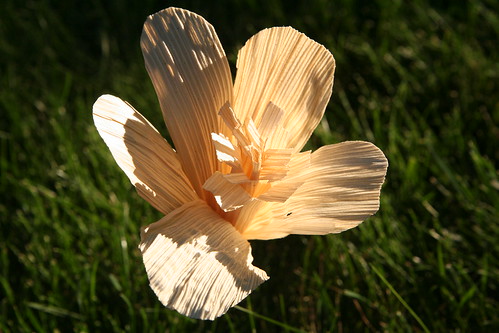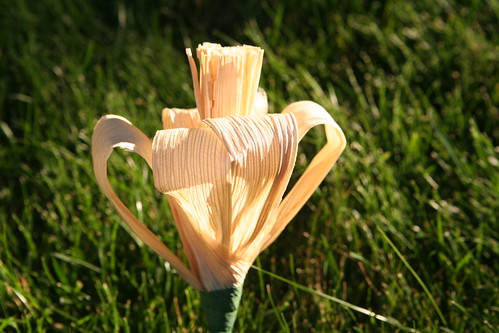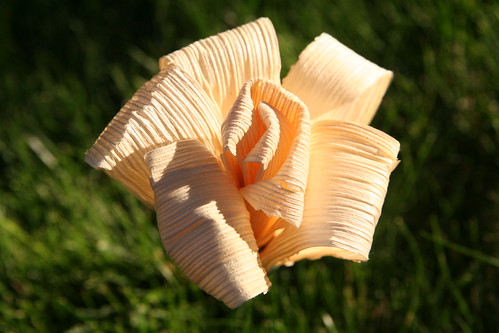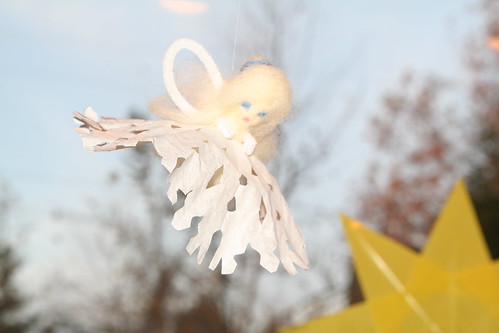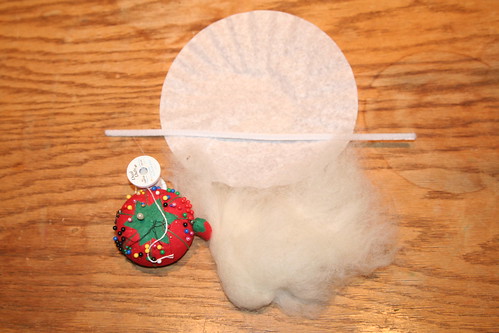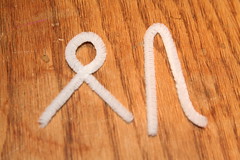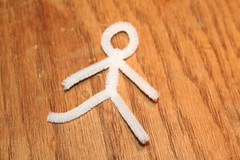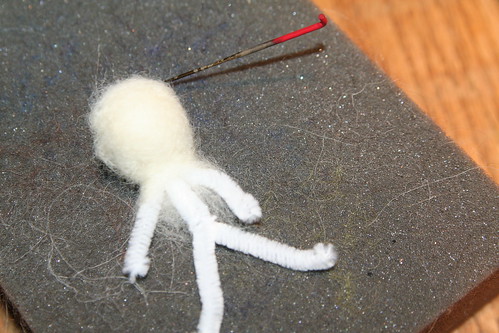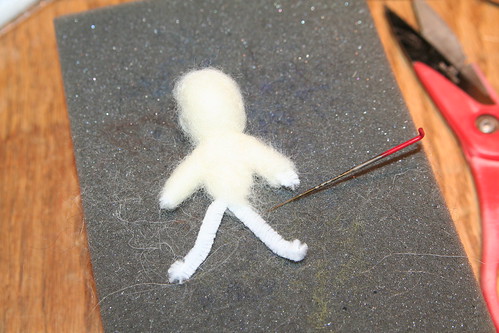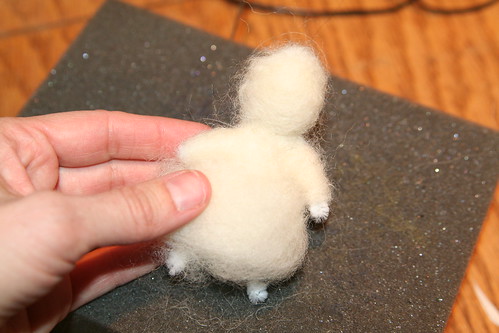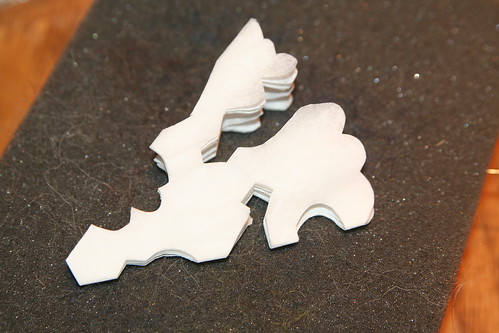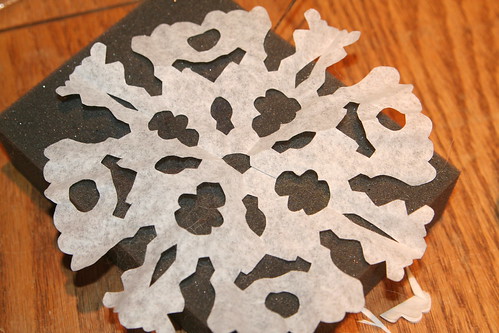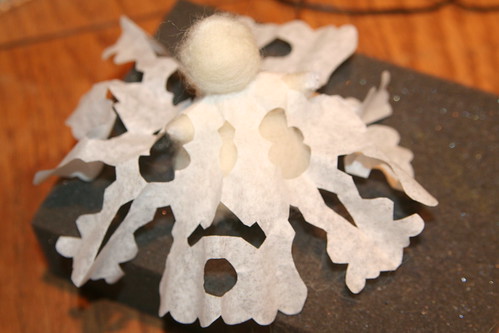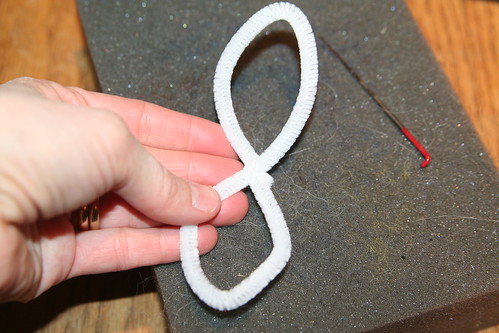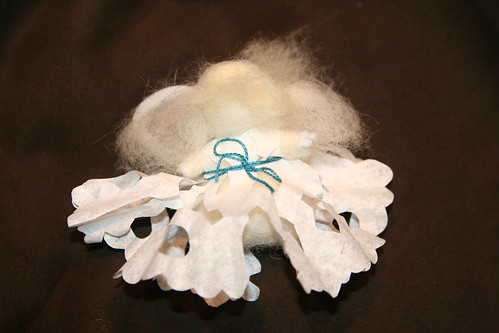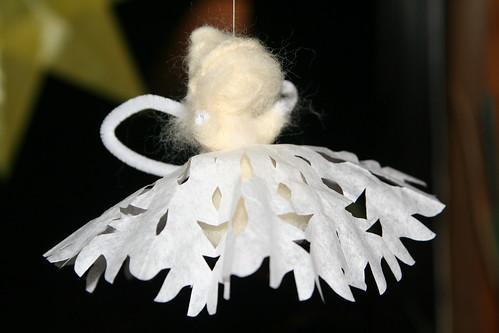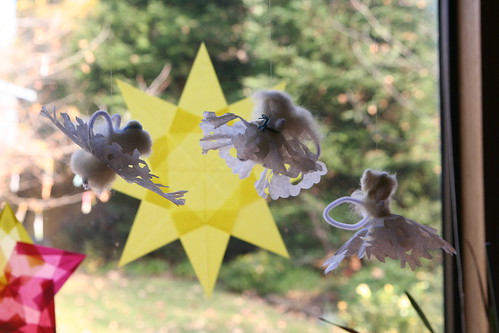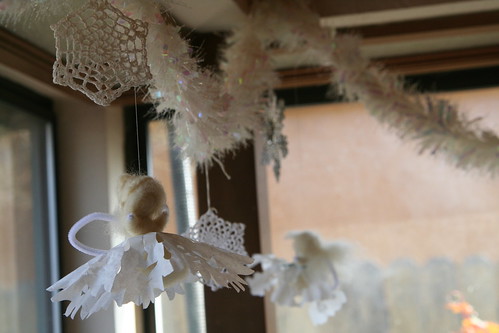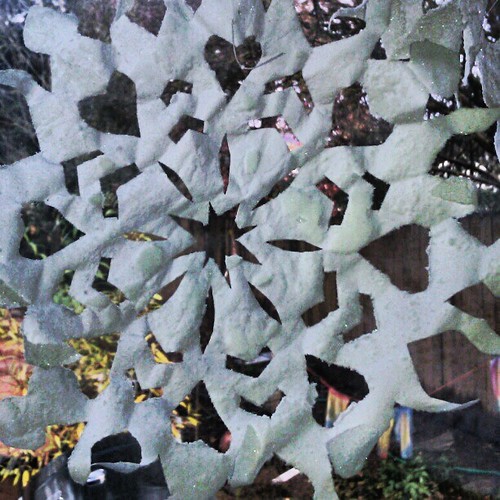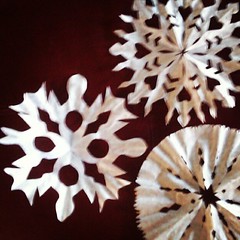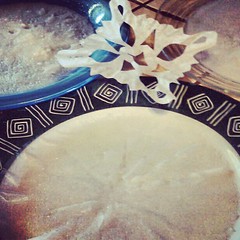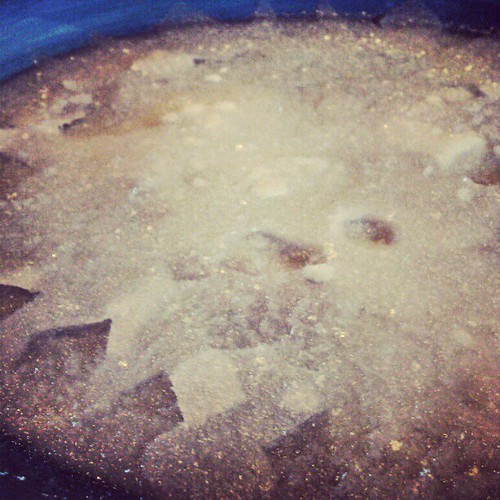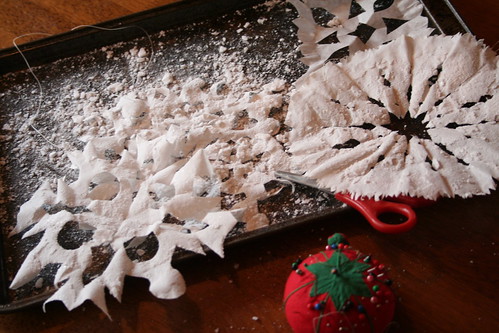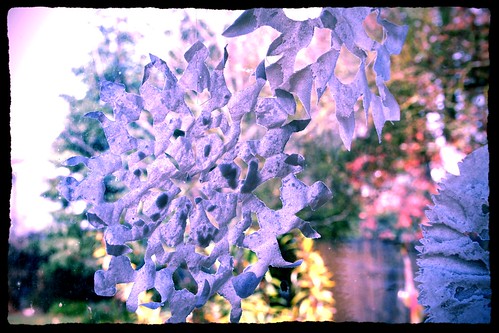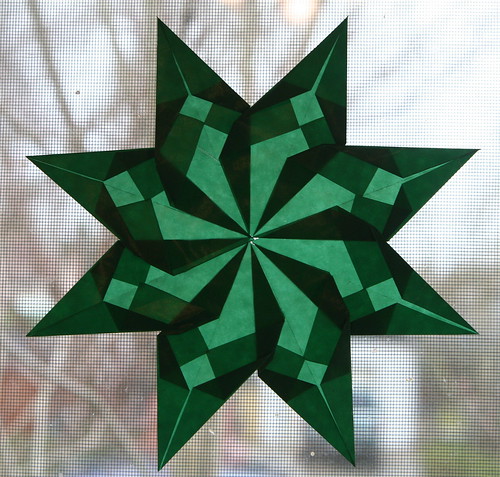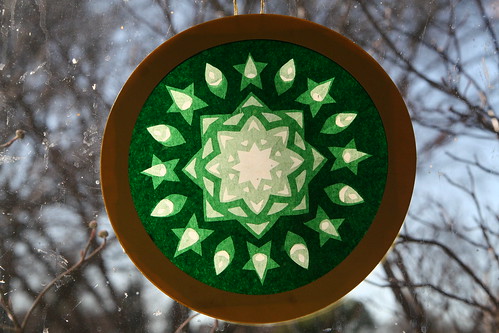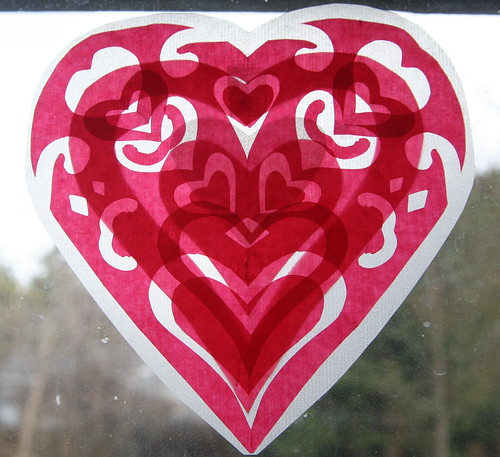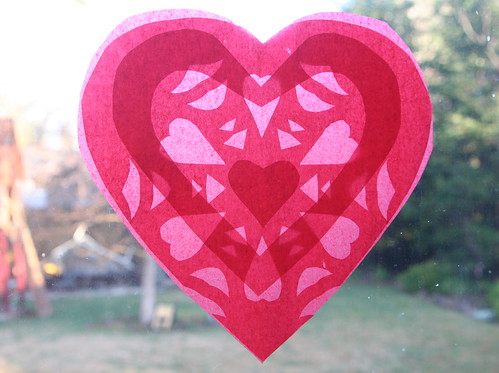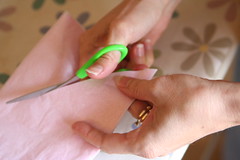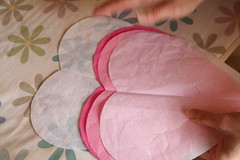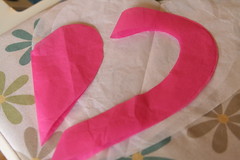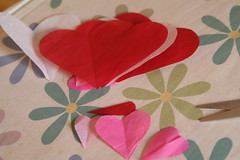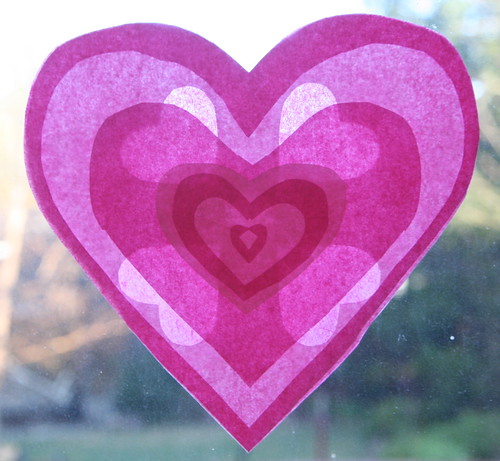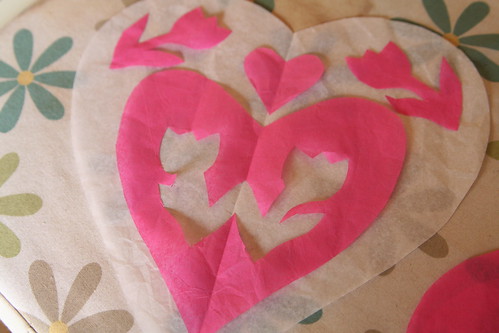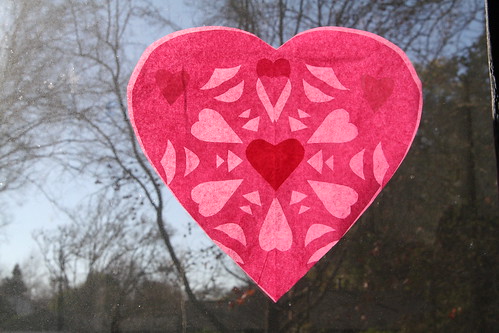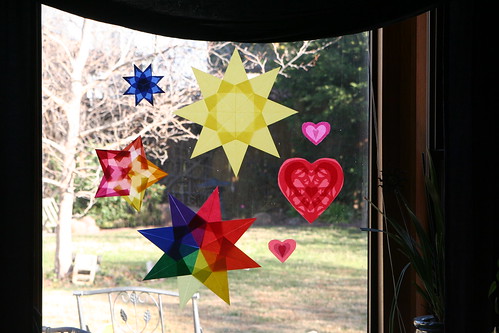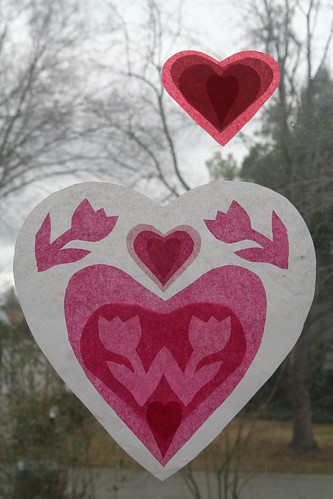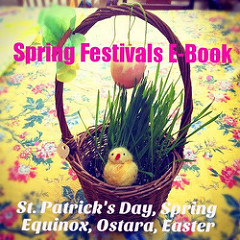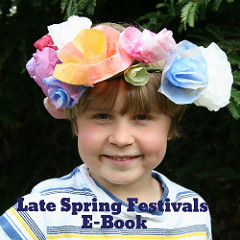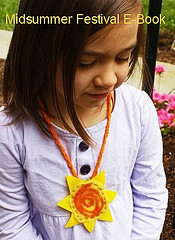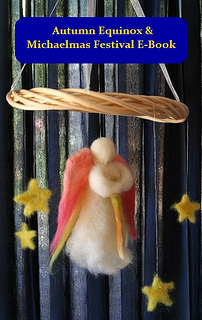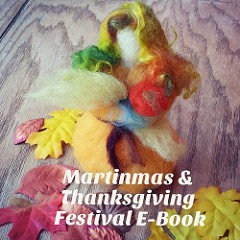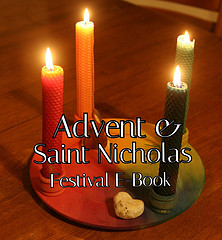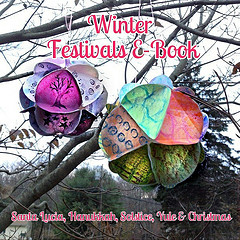Humble Cornhusk Flowers
Cornhusks are a humble but versatile natural material. These protective sheaths from ears of corn, when dried, can be used in many lovely crafts. Here is a way to turn simple, natural cornhusks into flowers fit for decorating your family’s Thanksgiving table, adorning special gifts, or as accents for fall wreaths. If the children in your life need something special to do on Thanksgiving day, this is a fun, inexpensive, and rewarding activity.
Materials
• package of cornhusks from the Mexican food aisle of your grocery store
• 4-inch floral picks with thin wire at one end (floral wire on a spool can be used instead)
• green floral tape
• food dyes (optional)
Cornhusks come out of the package as wrapped triangles that are broad at one end and fairly narrow at the other. For these flowers, you’ll be splitting a large triangular cornhusk into strips of about 1 inch wide at the wide end. These strips will naturally taper to a point at the other end. It’s really not important to be precise in splitting the strips. These will end up being your flower’s petals. Make about five or six strips and then set them aside.
Take a cornhusk triangle and cut the bottom narrow half off so that you have in your hand the widest part. Lay a floral pick in the center with the wire pointing down and laying beside the wooden stem.
Now roll the cornhusk into a tight tube around this floral pick. The top will look something like the above photo.
Pull the free end of the wire up, letting it split the cornhusk in one spot, then wrap it tightly around the rolled husk with the pick inside. This is the finished center of your flower.
Now it’s time to add your petals. Many petal styles look great. One style is to take a strip of cornhusk (about 1 inch wide at its wide end) and fold it very gently over onto itself, making a loop. Hold both ends and place them next to your flower’s center. With one hand holding the flower’s center and the first petal, repeat the folding over of the next petal with your free hand. Add it to the flower. Repeat this until you have three to six petals ringing your flower’s center. Hold all the petals to the flower center with one hand.
Gently stretch the floral tape slightly, and then place the tape’s end on top of your petals where they join the flower’s center (where the base of the flower is). Begin wrapping the tape around and around your flower’s stem by spinning the flower while keeping the tape gently stretched so it sticks nicely to the previous layer of tape. Work the floral tape all the way down the flower’s base and onto the wooden floral pick stem to its very end. You now have one complete flower, something like this one below.
Cornhusk flowers can be made with many variations.
Another way of making flower petals is to unfold a whole cornhusk and cut dags into it every inch or so. Cut the narrow end of the cornhusk off and then wrap these dagged petals around your flower’s center.
You can then gently pull the petals away from the center and curl them slightly with a finger or a pencil after you have them secured with floral tape. This can result in a lovely lily shape.
You can also round the ends of your petals like so. In the photo above, you can see that I split the flower’s center into narrow strips and bent them to achieve a different look for the flower’s stamens.
Some flowers have centers that extend beyond the petals. In some flowers, the opposite is true, and you can trim them to be shorter than the surrounding petals.
Another possibility is to roll a folded cornhusk to make a center like in the photo above. This one looks more like a rose.
Finally, if you’d rather your cornhusk flowers have colors instead of being natural color, that’s easy to achieve by soaking the cornhusks in a bath of water with food dye. Before you begin making flowers, you’ll have to let your dyed cornhusks dry completely, but that should take only a day or so. Food dyes will achieve pastel colors. If you want vibrant colors, you can dye the cornhusks with fabric dyes. Imagine the possibilities!
Here’s my humble cornhusk flower bouquet and table decoration. Will these flowers grace your Thanksgiving table?
